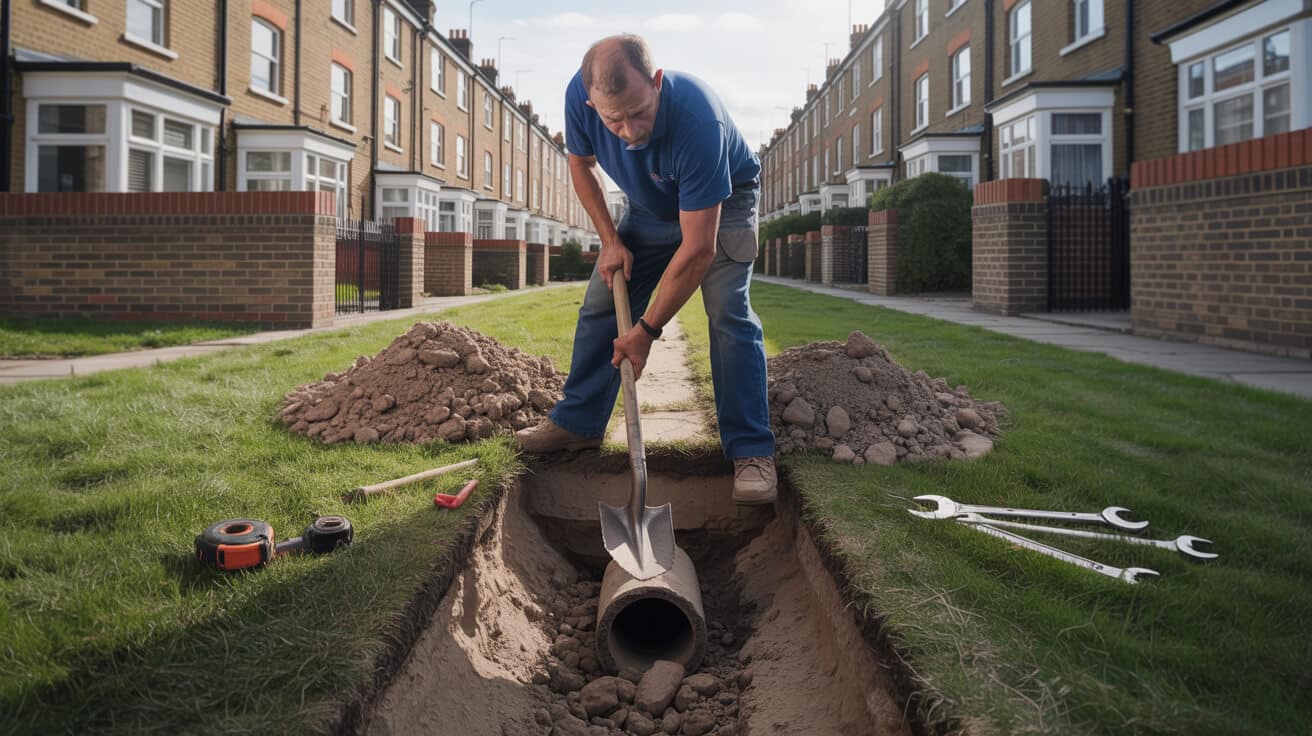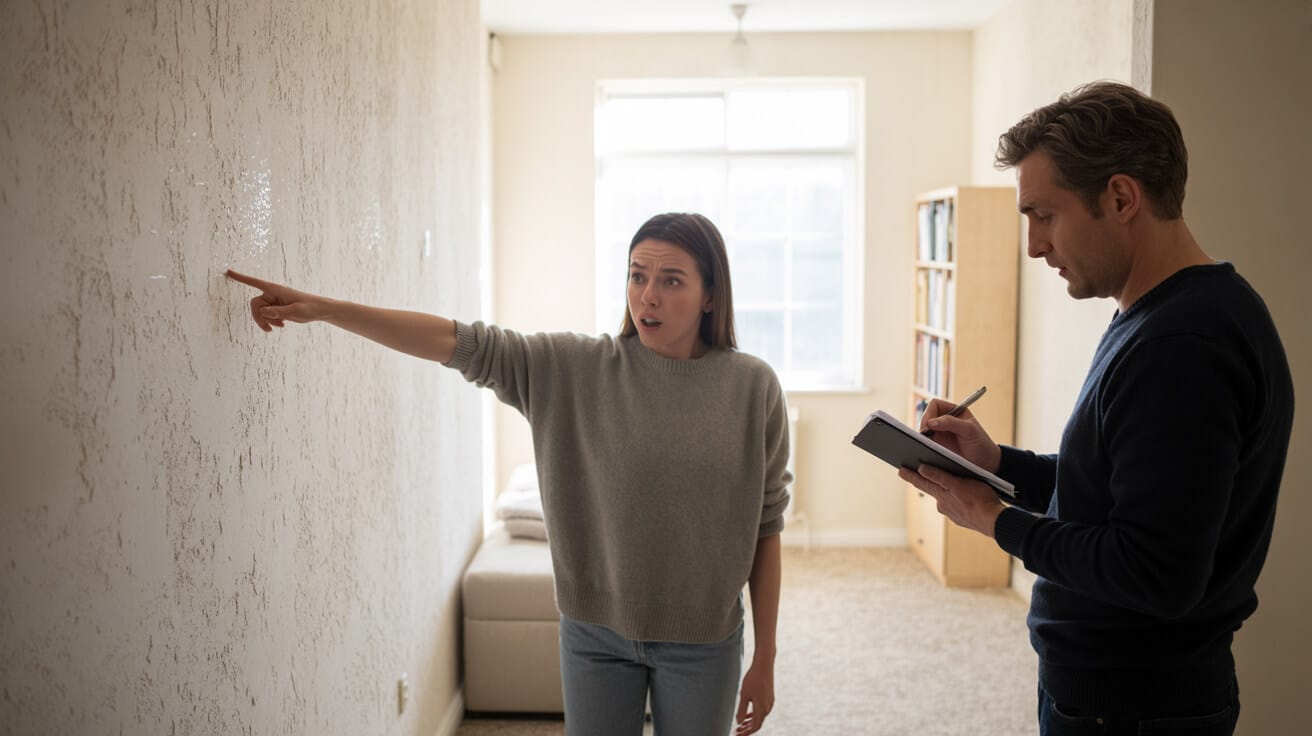 Choosing The Right Radiators a Style and Function Guide
Choosing The Right Radiators a Style and Function Guide

Which Types of Radiators Actually Work for Each Room—and How Does the Right Choice Affect Your Property?
Every room in your property tells its own storey—sometimes it’s quiet, sometimes it’s relentless. Yet most owners and managers still treat radiators as background, thinking they’ll do the job if they’re just switched on. The truth is, your choice of radiator shapes the comfort, energy costs, and long-term value of a space as much as the flooring or lighting. Radiators that “just exist” lead to unhappy tenants, cold mornings, and an impression of cut corners—especially in today’s market where compliance and first impressions count.
The radiator you choose is a quiet test: does your property feel cared for, or like an afterthought?
Successful heating always starts with the room’s true function—family living, occasional guest room, busy office, elegant lobby, or compact rental. Panel radiators dominate in bedrooms and lounges for reliable, broad heat. Column designs—and their signature “heritage” look—shine in tall-ceilinged or draught-prone dining rooms and large living areas where long-lasting warmth is needed, echoing the property’s own storey. Vertical and designer radiators leap to the front in corridors, kitchens, and slim annexes, reflecting a focus on style and utility where space is tight. For offices, bathrooms, or garden rooms—where full pipework can be a pain—electric and dual-fuel radiators now answer with flexibility and speed, often sidestepping the need for disruptive installation.
But why is choice so critical? Pick a radiator that works against the room and you’ll see patterns of wasted energy, slow heat-up, or even tenant dissatisfaction crop up year after year. Landlords face sharper edges: annual compliance checks, tenant complaints, EPC-pressure, and value dips from systems that look or perform mismatched. For commercial spaces, under- or over-heating isn’t just discomfort—it’s lost staff productivity and missed regulatory benchmarks.
How to Pick the Right Radiator for Every Room
- Panel Radiators: Versatile and modest, they blend into living rooms and bedrooms where reliable, even warmth with discreet style is essential. Their finned backs and robust steel construction mean steady, cost-effective heating, especially for standard-shaped spaces.
- Column Radiators: With exposed tubes and that “vintage utility” look, these are the go-to for tall, leaky, or open-plan rooms. They deliver slow-release, lingering heat and can inject period charm or industrial edge, merging new controls with classic resilience.
- Vertical/Designer Models: Space-saving and visually bold, these excel in hallways, kitchens, extensions, and anywhere you can’t lose floor space. The right output matches function to style, avoiding hot heads or cold feet.
- Electric and Dual-Fuel: Perfect for extensions, modern bathroom upgrades, or anyplace plumbing a new loop is overkill. Their flexibility and improved controls make them strong picks for offices, granny flats, or garden rooms, where heat needs are more sporadic and responsive.
Is Radiator Sizing Really Just About Calculators, or Does How You Use the Room Matter More?

When the conversation turns to radiator selection, everyone wants a shortcut—size, shape, or style. But too many properties end up with a scattergun approach: scores of poorly-sized radiators that look fine but underwhelm on winter mornings or cost more in utility bills than you ever see in comfort.
Here’s the unvarnished truth: size is about more than a calculator’s number. You must tie BTU (British Thermal Unit) requirements to the room’s dimensions, insulation, and—crucially—how you actually use the space. The same “square metre” can feel completely different: a north-facing lounge with single glazing will sap warmth like a stone, while a compact study may need less than you’d ever imagine.
A properly-sized radiator responds to what your room eats in heat loss, occupancy, and exposure. Too small, and you’re layering jumpers every February. Too big, and you’ll blast past comfort, hit stuffiness, and waste energy (and cash) as heating cycles shorten or boilers overwork.
Too little heat is just as expensive as too much—both kill comfort and inflate bills quietly.
Five-Step Smart Sizing Method
- Room Volume First: Multiply length, width, and ceiling height to get cubic metres.
- Spot the Heat Thieves: Scan for big windows, poorly insulated walls, or external exposure—add a BTU “margin” if they’re present.
- Assess Use, Not Just Square Metres: A work-from-home room needs a higher BTU than an unused guest room. Kitchens with frequent oven use can run cooler.
- Never Guess—Match or Exceed BTU: Choose a radiator (or combo) that meets or slightly exceeds your needs. Rounding down to save space always fails.
- Big Spaces, Split Loads: Large or open-plan areas benefit from multiple radiators, giving you more even warmth, flexible control, and energy-efficiency in how zones are used.
Extra variables—underfloor heating, robust insulation, or high-end glazing—can dramatically adjust your calculation. When uncertain, a professional heat-loss survey factors in your home’s specific strengths and weaknesses, not just what’s on a box.
Are Vertical and Designer Radiators All Talk—Or Will They Really Heat a Room?

On Instagram, vertical and feature radiators pop off the wall—aesthetically, they upgrade even the blandest corner. But online buzz and showroom glitz often spark doubts: Will these tall, slim, “designer” models actually heat your room, or just look the part?
Here’s how it shakes out: vertical radiators with an appropriate BTU will heat any room as well as horizontal ones, provided they’re sized right. Where things change is how they deliver heat. Instead of wide, wall-spanning warmth, you get a concentrated, vertical heat plume. In classic installations (wide rooms, big lounges), this can mean modest cool spots at a distance or near the floor, but in narrow hallways, kitchens, or bathrooms, it’s often a strength, not a weakness.
Pipework is a practical hurdle: moving from a standard panel to vertical means new brackets and pipes—not just a rack swap. Vertical fit can also mean using two radiators in wide rooms or boosting height for the same output.
Bold design only shines if heat output matches room use—beauty can’t make up for the wrong spec.
Smart Checks for Vertical/Designer Choice
- Room Shape: Long, narrow = good candidate. Large, square = think about pairing or supplementing.
- Function: Hallways, kitchens, and bathrooms are vertical winners due to foot traffic, wall space, and rapid towel drying.
- Fit & Finish: Always align the radiator’s look with door handles, taps, and switches for a cohesive feel. An anthracite vertical in a kitchen brings as much value as a perfectly-placed spot light.
When aesthetics meet function, you elevate a property’s curb appeal—landlords gain extra edge in letting, and managers tune for both style and substance.
Does Radiator Material and Colour Matter, or Is It All in the Details?
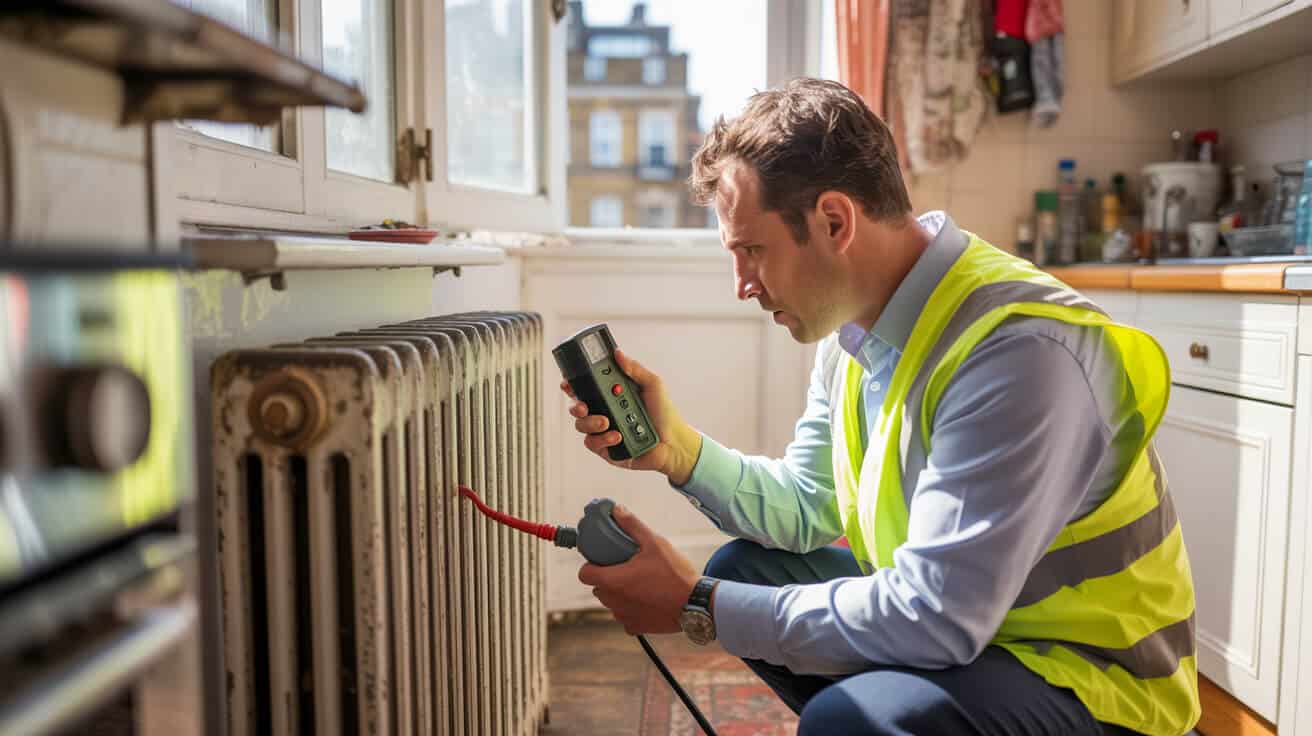
It might feel easiest to go white, steel, and done, but material (and finish) is a silent driver of warmth, speed, cost, and, yes—maintenance. Steel radiators (the UK’s bread and butter) are durable, affordable, and blendable across property types. Aluminium moves heat faster; it’s lighter, often lower-profile, and makes sense for anytime you want a room to warm quickly after use—perfect for busy households or mixed-use properties where rooms serve multiple tenants or staff. Cast iron radiators are slow to heat up, but unbeatable for lingering warmth—ideal for period homes, statement lounges, or rooms with tall ceilings and draught risk.
Colour and finish also quietly set the property’s mood and maintenance curve. A gloss white finish maximises reflected light, resists dust, and signals “move-in ready.” Matte, metallic, or designer shades often lose 5–10% in heat output, but introduce “wow” factor in kitchens, premium baths, or high-turnover rental zones. Powder-coated finishes matter most in damp places—baths, utility rooms, or laundry—extending service life and holding insurance and resale value steady.
Good radiators disappear or enhance a room, never interrupt—pick for effect, then fit for performance.
Landlords and managers: confirming that finishes and colours match hardware and other visual cues throughout a property isn’t just “nice to have”—it signals intent and diligence to potential renters, buyers, and regulatory eyes.
What Modern, Smart, and Sustainable Heating Upgrades Make Sense in 2024?
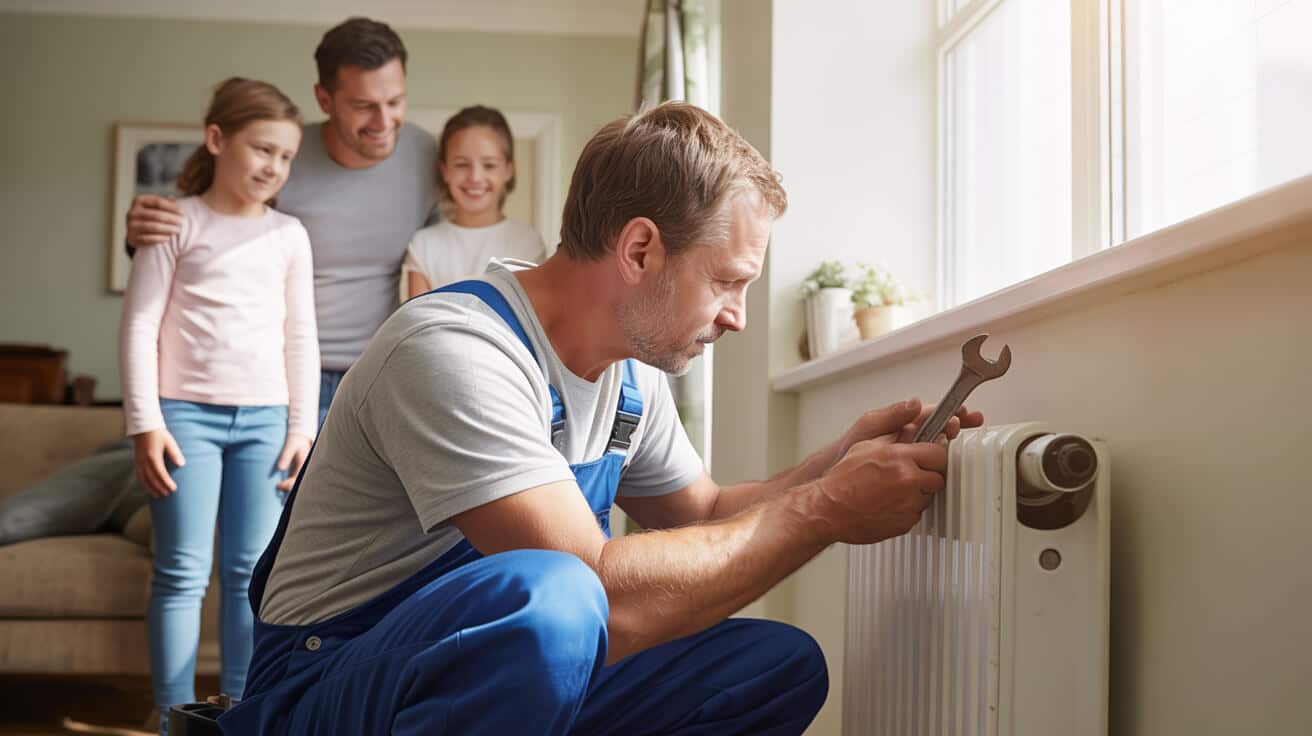
Heating is evolving fast. Ten years ago, a basic panel with a manual TRV looked normal. In 2024, expectations have shifted—tenants, inspectors, and energy grant officers want to see purposeful controls, data-driven savings, and evidence you’re future-proofing assets. It’s not about tech for tech’s sake; it’s about cutting costs, improving comfort, and earning higher EPC scores or compliance ticks that set your property apart.
Smart TRVs (thermostatic radiator valves) are the strongest upgrade—offering remote scheduling, zone control, and instant wins on energy bills and comfort for home offices, guest rooms, and rental flats. Dual-fuel options empower landlords and owners to keep bathrooms snug in summer, offer energy-conscious boosts in the shoulder seasons, and reduce total boiler run time.
Aluminium radiators rise as an answer to the push for sustainable cycles: faster heat, less thermal inertia, ideal for responsive “on/off” routines and properties with high turnover.
Smart Upgrade Checklist
- Add smart valves: Enables room-by-room scheduling, lower bills, and smarter heat control *(Which?, 2024)*.
- Opt for hybrid/dual-fuel: Give tenants or staff flexibility to heat just the spaces they need, when they need, instead of wasting whole-property energy.
- Favour modern materials: Aluminium and powder-coated steel marry efficiency and durability.
- Lean into vertical/space-saving designs: These unlock opportunities in city properties, offices, or tricky renovations.
- Monitor energy use: Modern apps diagnose where money goes, making it easier for you (or your tenants) to manage bills and catch issues before breakdowns.
Remember: some upgrades qualify for energy grants, and virtually all improve EPC ratings—retaining value and making your asset more attractive to let or sell (Gov.uk/EPC, 2024).
How Much Should You Budget for Upgrading Radiators Without Compromising on Standards?
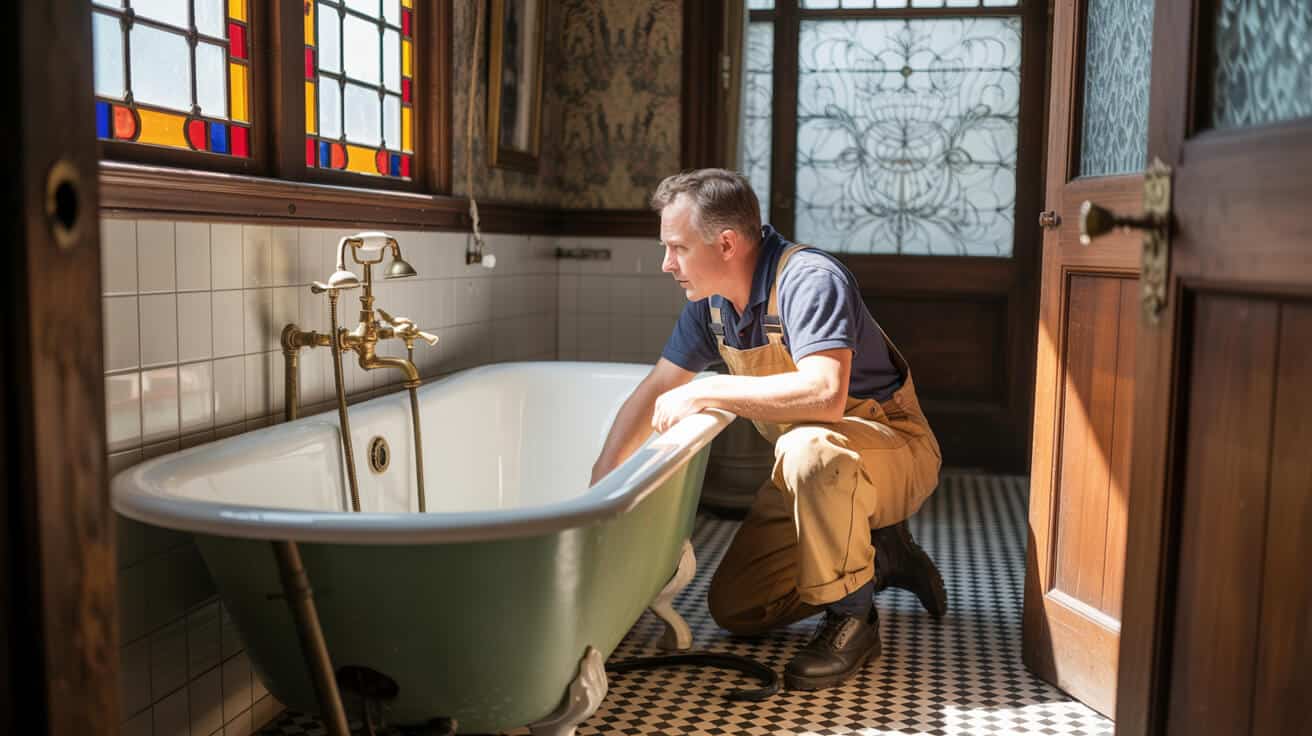
It’s not a single line on a quote—radiator upgrades span budget, scope, finish, controls, and aftercare. Too many owners fall into the “unit price only” trap, only to face hidden labour, compliance, and maintenance costs that creep in after instal.
Panel radiators are the wallet-friendly backbone, averaging £45–£140 per unit plus £100–£210 to fit. Vertical or designer models cost more—£130–£550 (or higher) per radiator, with £120–£350 fitting due to extra bracket or plumbing work. Cast iron radiators are a premium choice, especially when restoring a Victorian or high-value property; they’re slow to fit and always heavy, but can last 30 years or more. Always ask for WRAS-approved units and confirm fitting by experienced, certified engineers for smooth sailing on compliance reviews.
Here’s where your budget really stacks up:
| Radiator Type | Unit Cost | Fitting | Service Life |
|---|---|---|---|
| Panel | £45-£140 | £100-£210 | 10–15 years |
| Vertical | £130-£550 | £120-£350 | 10–15 years |
| Cast Iron | £300-£750+ | £170-£400 | 25–40 years |
| Electric | £80-£280 | £75-£150 | 8–12 years |
Pro tip: Factor in costs for control upgrades—smart TRVs or programmable digital stats add up front but can slash annual bills, ease maintenance, and bump EPC scores.
Bundling upgrades room by room or floor by floor usually nets a discount and less disruption for tenants or customers. Always confirm warranty, certificate handover, and servicing responsibilities at instal—don’t get caught short at inspection time.
The cheapest option now is rarely the least expensive in the long run. Every corner cut invites a future breakdown or complaint.
Which Rules and Standards Must You Meet for Safe, Efficient, and Legal Heating in the UK?
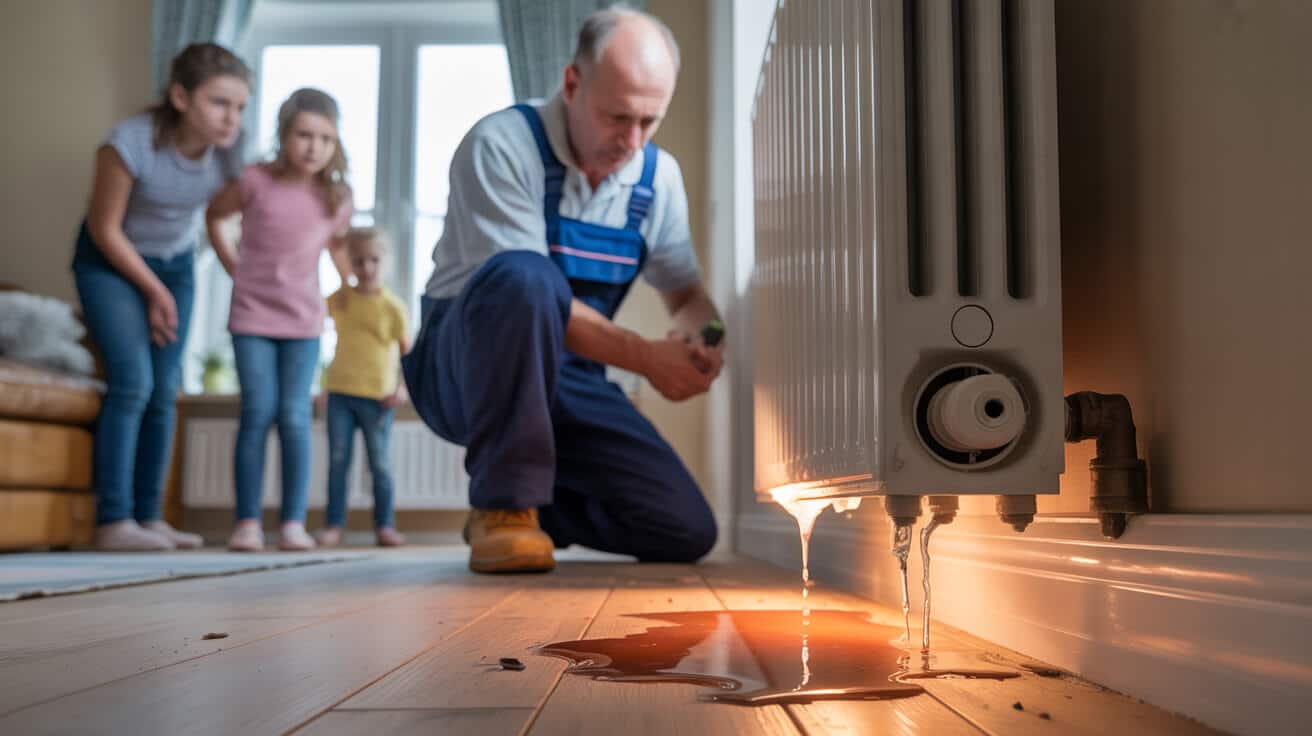
Upgrading a radiator system unlocks more than warmth—it unlocks a flood of compliance checks, certifications, and responsibilities for landlords, letting agents, managers, and owner-occupiers. Every regulator, from Building Control to insurance auditors, wants proof that you’ve done more than “just fit it”—they want to see safe, energy-efficient, and future-ready systems signed off and properly documented.
Building Regulations Part L makes balancing, zoning, and programmable controls mandatory for upgraded or new systems. EPC standards now increasingly demand demonstrable efficiency for all properties new to the rental market or transferring title. WRAS approval is not optional: every valve and fitting must be approved to defend both drinking water standards and your liability in case of a contamination dispute.
Part G governs water temperature safety—especially for children, elderly, or vulnerable adults. In all rented accommodation, you must show working, controlled heat, and prove responsive maintenance. Part P covers electricity: electric radiators in kitchens and baths must be installed and certified by a qualified professional—insurance may be voided otherwise. And don’t overlook G3 regulations for unvented cylinders—a critical link to modern towel radiators and luxury bathrooms, requiring G3-Certified fitters and clear discharge compliance.
Smart upgrades (digital stats, remote programmers, energy analytics) not only increase compliance but give you audit-ready logs that help quickly settle disputes or let you qualify for grants or “green” incentives.
Owning the paperwork, and not having to chase it, signals diligence—protecting your asset, your tenants, and your peace of mind.
Should You Choose Electric, Dual-Fuel, or Conventional Radiators? Matching Systems to Space
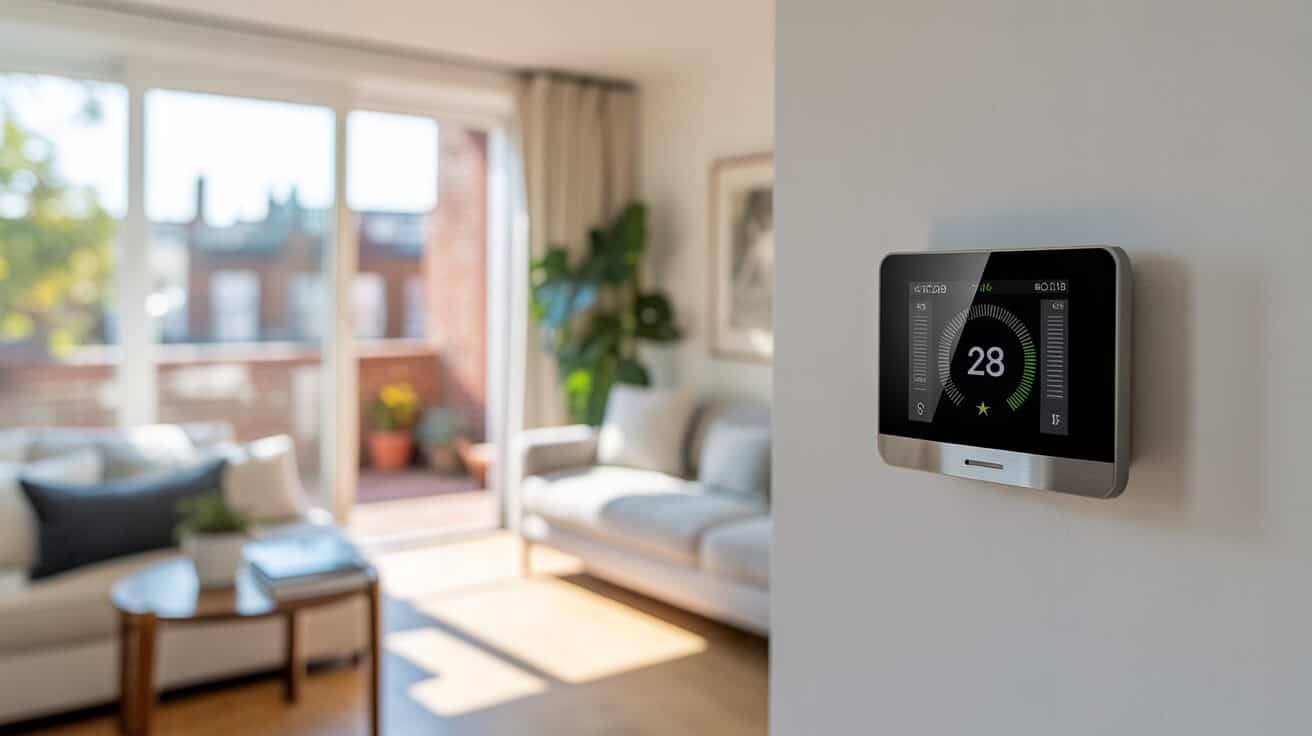
No single system fits every property, especially as layouts, occupancy, budgets, and regulatory zones evolve. More homes and businesses now mix-and-match central, electric, and dual-fuel radiators, aligning with the realities of retrofit, budget, and flexibility.
Electric radiators win for garden rooms, extensions, or spot fixes—fast to instal (low disruption, low upfront cost) but with higher running costs. They excel in spaces used sporadically, but can sting for continuous large-space heating if insulation is weak.
Dual-fuel radiators are the prime pick for bathrooms: central heating hands off to the electric element for summer boosts or quick warm-ups, without firing up the whole system. This flexibility meets both tenant comfort and compliance demands with minimal fuss.
Conventional central heating remains the base for whole-house comfort—more expensive to instal (especially in retrofits or where pipework is tricky), but almost always delivers the best running cost over time. It’s king for compliance, large-scale refurbishment, and any property where “set and forget” comfort matters.
| System Type | Instal Cost | Running Cost | Best Use |
|---|---|---|---|
| Electric | Low | Higher | Offices, refurbs |
| Dual-Fuel | Moderate | Moderate | Bathrooms, flexible |
| Central | Higher | Low | Full properties |
Smart system design blends these: central for the backbone, electric for special cases, and dual-fuel for high-traffic spaces with unique comfort needs.
Why Plumbers 4U Are the Trusted Partner for Comfort, Compliance, and Style
You deserve a property that works as hard as you do—where warmth, low bills, tenant happiness, and regulatory confidence aren’t luck, but results of clear choices and meticulous work. Across London homes, flats, portfolio rentals, local authorities, and commercial suites, Plumbers 4U sets the benchmark for “fit it right, keep it right.” Our accredited engineers handle everything from spec and style matching to certification and aftercare, so you never have to guess or chase up loose ends.
- Expert specification: We match BTUs, output, and materials to your room and occupancy—no cold spots, no overheated corners, no aesthetic afterthoughts.
- Precision installation: Every fitting, finish, and bracket is compliant, visually on-point, and built to last. System balancing and smart controls included, so you get instant comfort—not just later, but for years.
- Full compliance, no stress: Paperwork, EPC, WRAS, G3 certification, warranties—handled end-to-end, tracked and ready for any audit.
- Built-in peace of mind: Aftercare, maintenance reminders, and support on call—no drama, no downtime, no unanswered question left to frustrate you or your tenants.
- Proven experience: Our quotes are fixed, clean-up is standard, and every job is logged with before/after photos so you own the process and the result.
Fit for comfort. Certified for compliance. Styled for reputation. That’s the Plumbers 4U difference.
Bring your property up to temperature—and expectations—with Plumbers 4U: smart, legal, and lasting solutions for every room, every project.
Frequently Asked Questions
What radiator innovations genuinely change how UK homes and investments perform in 2024?
Radiator improvements in 2024 are transforming property management—integrating smart controls, high-efficiency designs, and regulatory alignment to deliver measurable energy savings and marketable enhancement for both householders and property owners.
Feature-rich TRVs—especially smart, app-based versions—empower every room with precise heat modulation, slashing wasted energy and nudging annual savings above 15% in properly zoned homes (EST, 2024). Dual-fuel radiators now offer bathrooms, lets, and commercial premises both the assurance of central heat and the agility of electric top-ups, crucial for off-peak occupancy and mid-season comfort. Lightweight aluminium radiators, tuned for fast reaction and renewable compatibility, stand out for households retrofitting heat pumps or landlords looking to future-proof EPC scores. These aren’t “flashy extras”—every engineer-fitted control or low-water-content rad furthers compliance targets and makes ongoing maintenance easier.
Intelligent comfort is the new gold standard—a room-by-room approach adds value you can actually prove at inspection.
Which new radiator features support both compliance and long-term value?
- Smart, app-controlled TRVs: unlock day-by-day energy adaptation—critical for grants and carbon targets in 2024.
- Dual-fuel options: provide both peak winter readiness and rapid out-of-season heating for rooms that never go cold (ideal for hotels, serviced lets, or communal showers).
- Aluminium and fast-response panels: are now proven to cut heat-up times, increase comfort, and extend boiler/heat pump life through lower flow temps.
How do these advances stack up across property types?
- Owner-occupiers benefit most from multi-zone scheduling and EPC-linked value uplift.
- Landlords secure faster compliance, higher rents, and easier tenant retention.
- Commercial premises slash overheads while meeting tighter Building Regs and grant triggers.
Move ahead of commodity upgrades: Plumbers 4U delivers survey-matched hardware, guarantees certified installation (WRAS/G3 as required), and supplies digital documentation for every asset improvement.
Where do most radiator sizing and placement errors happen—and what’s the fix for awkward spaces?
Property owners and agents often misjudge heat demand based on “per square metre”—leaving irregular rooms, lofts, or open-plan zones with permanent cold streaks, excessive bills, and tangled pipework.
Effective radiator sizing marries technical calculation with lived reality. A system-aware approach weighs room volume, wall/roof insulation, and actual occupancy at peak times. Open-plan layouts, prevalent since Covid-19’s home-office boom, nearly always underperform if fitted with single, oversized radiators; strategic twin or triple placement, guided by a heat-loss survey, ensures corners and annexes share the load. Multi-pane and L-shaped rooms, notorious for stratification, benefit from staggered output and the use of programmable TRVs, so your living and working spaces stay usable from morning to night. Engineers also consider secondary factors: furniture flow, window-to-rad ratios, and the impact of kitchens with high humidity or zones that “steal” heat.
Every cold spot is a silent energy leak—placement rethinks pay for themselves each winter when every seat’s comfortable.
What advanced placement and sizing tactics make a difference?
- Distribute output: Two lower-powered radiators often outperform one big panel, especially in L-shape/zonally used rooms.
- Under-window positioning and door-adjacent rads buffer draughts without over-delivery.
- Use programmable or geo-zoned valves, not just basic manual TRVs, to react to daily occupancy and maximise savings.
Why does professional mapping outpace DIY calculators?
Engineers factor in real-time flow, air movement, sun exposure, and room use patterns—NO off-the-shelf calculator can model these. Full-room surveys from Plumbers 4U include floor plans, insulation audits, and never leave unheated dead spots.
Begin with expert heat mapping—Plumbers 4U engineers diagnose, specify, and fit with operational logic, so your upgrades match everyday life, not just blueprint theory.
How do material choice and surface finish impact radiator output, durability, and ongoing cleaning?
Material and finish shape not just the lifespan of your radiators, but also their ongoing efficiency and suitability for different uses—from wet bathrooms to elegant living rooms.
Aluminium radiators steal the show for rapid thermal response, light weight, and cleanliness—they resist scale and corrosion (especially key in hard water areas) and speed up system reaction for both gas and heat pump set-ups. Steel designs win out for versatility in finish, colour, and affordability, making them a perennial favourite of both landlords and homeowners. For traditional or high-value homes, cast iron radiators provide enduring “thermal inertia,” radiating heat long after the heating switches off, and they’re often a deciding factor for style-led buyers or tenants. Finish matters too: a powder coat (not basic paint) wards off rust, limescale, and fingerprints in kitchens or bathrooms. Gloss or light hues maximise heat output and minimise visible grime; dark or matte finishes elevate room aesthetics but knock 5-10% off usable BTU—a worthwhile trade for signature interior spaces.
A material that speeds up cleaning and shrugs off limescale is money saved on service calls, year after year.
What’s essential for bathrooms, kitchens, and high-traffic zones?
- Anti-corrosive, powder-coated surfaces—insist on certified product spec, especially for rental or multi-tenant buildings.
- Verify WRAS or G3-certification for all new instals.
- Ask your surveyor about hybrid rads—blending speed (aluminium) and design (steel) to match heat-up rates and durability.
When does an extra finish or protector actually pay back?
If you’re overseeing periodic lets or shared units, tough outer coats prevent damage penalties and preserve deposits. Professional fit-out from Plumbers 4U lets customers compare live samples and guarantees an instal that holds up for years, with less maintenance and more peace of mind.
Book a showroom visit or on-site finish audit to see the real-world difference the right spec and surface makes.
What are the “hidden” cost and ROI levers in radiator upgrades beyond unit price?
The cost of radiator upgrades breaks down to much more than the label price of a panel—a smart investment involves systemic thinking that aligns installation, control, compliance, and ongoing maintenance.
Professional installation eliminates common future costs: correct pipe reroutes for vertical or designer rads reduce air locks and maintenance bills; zoned smart controls, now as little as £60–£180 per room, immediately boost energy savings and compliance. Upgrades handled in bundles—multiple rooms or a full property in sequence—yield labour and disruption savings. The “paper trail” pays dividends, too: proper WRAS/G3 paperwork, warranty info, and documented balancing ensure let/sale readiness and avoid property disputes.
| Upgrade Category | Typical Fitted Price | Service Life | Compliance/Grant Ready? |
|---|---|---|---|
| Standard | £145–£350 | 10–15 years | Yes (with smart TRV) |
| Designer Vertical | £250–£900 | 10–15 years | Yes |
| Cast Iron/Column | £470–£1,100+ | 25–40 years | Sometimes |
| Electric-Only | £155–£430 | 8–12 years | No |
A discount instal without certified controls or paperwork is a false economy—it just pushes the cost to your next audit or letting.
What “invisible” extras catch most owners or managers unaware?
- Pipework adaptations (vertical/hybrid/oversize rads)
- Balancing and de-airing (key for old buildings/new systems mixed)
- Smart instal programming (“cheapest” bids often skip this, erasing savings)
- Compliance docs for EPC, WRAS, G3, gas/electric checks
Which project types can be bundled for big savings?
- Rental portfolios handled in blocks
- Full-floor or multi-flat upgrades during refurb
- System-wide control swaps (all TRVs smart by floor or zone)
Plumbers 4U delivers transparent quotes, real cost-benefit reviews, and certified paperwork in one project—guaranteeing a repair, upgrade, or full instal that actually protects your asset for the long haul.
How do 2024’s UK regulations redefine radiator upgrade risks, rewards, and required paperwork?
This year’s compliance climate leaves little margin for error. Staying legal, insurable, and grant-eligible now hinges on “audit-proof” installation, correct paperwork, and matching every system change to Building Regs and utility-driven standards.
Building Regulations Part L requires all replacements and upgrades to hit defined efficiency benchmarks—and mandates smart controls in most settings. WRAS approval validates water-safe connections, rubber-stamps insurance, and protects from accidental cross-contamination. G3-compliant paperwork is non-negotiable for unvented cylinders or any high-pressure hot water work. Part P (electrical) and EPC certifications round out the chain—miss a single link and you risk letting voids, resale delays, or fines. Landlords face even stricter annual compliance checks, with digital documentation and QR-coded asset logs now fast becoming the norm.
In heating upgrades, paperwork and real value are welded together—the system is only as compliant as its weakest document.
Which certifications and standards require the sharpest focus this year?
- WRAS (Water Supply Fittings Regs) for every new rad or valve
- G3 (unvented cylinder/pressure safety) on all hot water tie-ins
- Part L (energy/performance) and Part P (electrics) for new wiring or kitchen instals
- Digital EPC reports including detailed controls/rad upgrades
How do busy landlords or managers keep up?
Demand “whole job” paperwork from your installer—Plumbers 4U provides completed Benchmark logs, digital compliance packs, and annual reminders to avoid legal or audit issues.
Stay ready for every inspection. Plumbers 4U’s compliance chain means no scrambling for paperwork, ever—one instal, full cover, every time.
Which rooms and use cases call for vertical, column, or bespoke designer radiators over standard panels?
Not every part of a property should get the same radiator—form and function both decide value, comfort, and even compliance across key rooms.
Vertical radiators come into their own in hallways, narrow baths, kitchens, and corridors—places where wall area is scarce but aesthetics matter. Their fast heat-up and feature-wall impact raise both comfort and the price premium for rental turnover or resale. Column and heritage rads hold “thermal inertia,” best for lounges, period homes, or commercial entrances where visual stature and slow-release warmth upgrade the building’s social and market standing. Designer models, when matched thoughtfully (think striking colour or smart integration), drive up viewing appeal in open-plan living, commercial offices, and high-value professional lets. Each also strengthens compliance: verticals sneak past EPC limits, while WRAS-list designer radiators handle kitchens or flexible spaces without compromise.
A well-chosen radiator is a finish and a function—raising the comfort and the cachet of every room at once.
Where should owners and managers prioritise specialty radiators for outsized ROI?
- Tight or visually important spaces: verticals or slender panels maximise impression and warmth.
- Heritage/statement rooms: columns combine historic influence with 21st-century regulation.
- Feature spaces (workspaces/reception): bespoke designer units pair professionalism with real heat output.
Can different styles disrupt heating efficiency or paperwork?
Mix away—provided a Plumbers 4U engineer matches output to room spec, balances smart control, and logs all data for compliance. Output uniformity is less important than tailored placement and documentation.
Trust Plumbers 4U for system-matched selection, compliant instal, and space-by-space hardware that supports both day-to-day life and your building’s reputation.
Step past the basics. Plumbers 4U makes every radiator upgrade a showcase for comfort, compliance, and clever design—protecting your investment, documentation, and every person who spends a moment in your properties.

